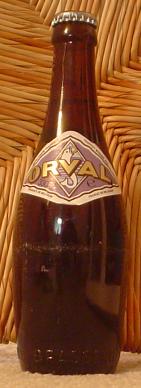Ikram, then I, pose
Questions on government prose:
Whether change would be best –
And not just in jest –
which spawns bureaucratic poesy flows.
Sadness
I do not write much about work because I quite like my work and it is usually not that good an idea to write about your work. But I would be missing a great sadness not to note the very surprising passing of the CAO of Kingston, my boss’s boss’s boss, Bert Meunier, whose obituary in the Whig-Standard this morning captures many of the qualities I got to know in working with him. Here is the Whig’s take on his career, much of which is a noting of events before my time. If I was to add anything it would be that, as set out in the articles, the principles that he clearly fought for have been adopted and are being brought into day to day action.
Study Results In
Preliminary study results are in on the actual effect of the Great Lake League of Bloggers after six full months of operations. Click on the chart for primary findings.
Curving
Not turning. Not tipping. Just curving points.
In saskatchewan – curling points.
Someone Is A Little Sensitive
A rather twisted mentality…I may be a murderer but don’t you dare insinuate I am part of that…that…large section of the population who generally live normal, law-abiding, happy lives. Let us all hope this is tossed out of court for displaying no cause of action:

Belgium: Orval Trappist, Villers-devant-Orval
 Orval. This is the nicest little bottle of ale in the hand. Shaped like a Perrier bottle in brown, decorated with a fish on a gold ring, it is the product of Trappist monks – one of the five (or is it six?) real Trappist ales going…well, except St. Sixtus of Westvleteren which you have to go yourself to the Abbey to buy.
Orval. This is the nicest little bottle of ale in the hand. Shaped like a Perrier bottle in brown, decorated with a fish on a gold ring, it is the product of Trappist monks – one of the five (or is it six?) real Trappist ales going…well, except St. Sixtus of Westvleteren which you have to go yourself to the Abbey to buy.
If you want to know what Belgian hops are like, antique and dignified like brittle lace, this is a great beer to try. Rajotte says it is dry hopped for a month and its taste is primarily a play of wild twiggy herbal yeast and hop with only a supporting role for the malt. As a result, it has a fairly light body with a  mouth filled with rustic flavour, thyme and lavander.
mouth filled with rustic flavour, thyme and lavander.
As with a good clovey southern German hefeweizen, a pork roast would do very well sitting in Orval for half a day before meeting the fire.
Dodgeball
Amongst all these serious questions, I am compelled to find more play in my life. Compelled but not necessarily driven in that mid-winter kind of way. But if I could get myself through the snows and into the gym, it would be a good dodgeball league more than anything that might get me there.
The Los Angeles Dodgeball Society is a weird mix of kids play and ’70s and ’80s style. Here are the rules which are a little more involved than the good old murderball that I recall. Murderball was basically you get hit and you are our with only one ball in play. These guys appear to play with about ten balls at once. Post-first person shooter murderball. Post- pre- and perhaps mid-game beverages appear to be a key factor as well.
I am glad I got back into soccer on the grass, pool swimming and even the exercise room but I wonder what game I would really like to play again in a gym if I had a chance amd twenty or so other nimrods? Floor hockey would be up there. Maybe basketball. Definitely dodgeball. Bloggers ought to adopt dodgeball as the official sport of cyberia. It is after all the ultimate nerd game.
Lessig on The Connection
I just listened to Lawrence Lessig on NPR’s show The Connection discussing the Creative Commons license and somewhat in support of “Free Culture” his book on how corporations control creativity. Here are my immediate lunch-hour thoughts which may be either quite pithy and brilliant or junk I will fully disavow by supper:
- I was happy to hear that generally he considered the control of collaboration to be an artists option which should be supported and that access and use without the permission of authors is extreme and unbalanced. He discussed, by comparison, how the flourishing of art through audience participation is encouraged by the Creative Commons license. Without such a generic license, he says, lawyers inhibit creative collaboration through insisting that someone own the specific work prior to it being created. However, this is only another agreement – a better license – rather than no license. Without a generic license, specific licenses caused an obstacle. What the Creative Commons provides is better law rather than lawlessness. This, I think, is very good and may distinguishes Lessig from Doctorow.
- He indicated that under copyright the rules for content in text differed from that in film and music and image. The “next generation of blogs,” however, will mix to create more powerful social commentary. Why? The power to “review” already exists. Is it the right to reference or to illustrate that is being demanded? The first, referencing, is likely available – I have never really worried out citing an expression as a fact – but the second is very problematic. Should I have the right to illustrate my creativity with yours without your agreement? Sadly, Lessing stated, incorrectly, that he thinks right to put music in NPR show as an illustrative background is a right. It is not unless there is payment. It is merely a license that it bought by NPR and paid for with the proceeds go back to the authors and other interest owners. He also said bloggers now cannot do what NPR can. That is true but merely because the copyright organizations like Canada’s SOCAN does not have a rate for internet use of music. Is that an illegality? It is neither prohibited or permitted, just as whistling another’s tune is not. Silence in law is not prohibition. Through various court rulings in Canada, we have something of a gap for now that is recognized in law, at least in Canada, which may make us something of a sanctuary at the present time. We may presently be the lucky nation for those purposes. But should the rights of bloggers and their desire to illustrate their creativity with the creativity of others come before the rights of those others to their creativity?
- He came out with the knee-jerk useless statement “The future is illegal.” Apart from the inability to know what that could mean even in the context of a downloading teen with a computer, I just do not think that this is true. The future is merely not defined.
- He suggests freedom is prevented when the control of culture is restricted to a few but why should the goal of unfettered progress take precedence over the interests of owners of each step in the inventive, progressive process? The digital medium of information really adds nothing to the consideration of that core question any more than previous electronic media or mass media have in the past. Are we not simply being intoxicated by the demands of speed – which demand is merely a product of the possibility of speed? Should the capacities of technology govern our human relations?
- One caller spoke of the need to be specifically paid – she has worked for 20 years to create and audience she needs to sell her CDs. “So we all have our frustrations,” Lessing responds, less than effectively, but a wider range of choices to be made available to artists. The license is merely a technique to make money. Don’t use it if you do not want to. He reiterated he does not support piracy. He cites, however, a recent restrictive sampling case from a US court and its result that entirely barred unpermitted use of another’s work was left as an unargued point – an implicit wrong. He followed by an implicit good, Mixter, a wep space that allowed consensual collaboration. But this is a false dichotomy, an unpermitted unlicensed taking compared to a permitted licensed use and necessarily contrary to what he indicated to the musician of 20 year’s effort. If her work can be sampled without consent, then there is piracy. Plain and simple. He also made what appeared to be an error in analogy, comparing sharing his ideas when speaking with sharing an artists expression – this is a strict division in copyright law. You have no right to the idea just the particular expression of the idea. Software programming interestingly fuses the two as their are both the idea and the expression (due to, in a way, being both the instruction and the execution). Perhaps this is the problem. The analogy from software and cretivity to other media and creativity may simply not hold – yet it pervades this discussion.
- For Lessig, the de-commoditization of software outside of proprietary interest as an extraordinary collaboration is a “dramatic model” which one presumes intelf makes it compellingly applicable elsewhere. He speaks too much of the need for generic “experimentation”. But can it really be transferred to creative activity in which the artist must have their specific work recognized as a unique commodity to be paid over a lifetime? Are we perhaps enamoured by the new technology to the point we are forgetting that the proposed general progress will create unacceptable consequences. How different is this really from earlier industrial revolution stages which sees the craftsman and artist crushed by the new, in this case, freeing them from the burden of stable income? In cooking they say do not pick up a hot pot without some idea of where you are going to put it down. There is as yet none of that good sense in this question.
Please comment, question and kick at will.
PS – not only did I originally spell it Lessing, I do have this desire to call him Doris.
